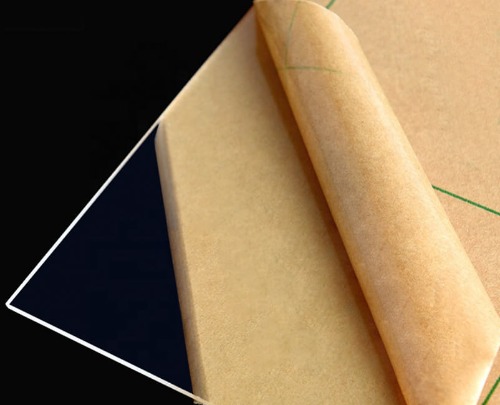The Benefits of Extruded Acrylic Clear Sheet:
Transparency: Extruded acrylic clear sheets offer excellent transparency, allowing for high light transmission. They provide a clear and unobstructed view, making them ideal for applications where visibility is important, such as displays, signage, and windows.
UV Resistance: Extruded acrylic clear sheets typically have good UV resistance. They can withstand prolonged exposure to sunlight without significant yellowing or degradation, making them suitable for both indoor and outdoor applications.
Impact Resistance: Acrylic clear sheets have high impact resistance compared to glass. They are less likely to shatter or break, making them a safer alternative, especially in environments where safety is a concern, such as in schools, hospitals, or households with children.
Lightweight: Extruded acrylic clear sheets are lightweight, which makes them easier to handle and install compared to glass. This property also reduces the overall weight of structures or displays, making them more convenient and efficient to work with.
Versatility: Extruded acrylic clear sheets can be easily cut, drilled, shaped, and thermoformed into various sizes and designs. They offer versatility in terms of fabrication and can be customized to fit specific requirements, offering a wide range of design possibilities.
Chemical Resistance: Acrylic clear sheets have good resistance to many chemicals, including common household cleaners and solvents. This property makes them suitable for applications where exposure to chemicals is expected, such as in laboratories or medical facilities.
Weatherability: Extruded acrylic clear sheets have good weather resistance, maintaining their clarity and physical properties even in harsh weather conditions. They are resistant to moisture, temperature fluctuations, and environmental elements, making them durable and long-lasting.
How to Choose Extruded Acrylic Clear Sheet:
Thickness: Consider the required thickness based on the application. Thicker sheets offer better rigidity and impact resistance, while thinner sheets are more flexible and lightweight. Determine the appropriate thickness based on the specific requirements of your project.
Transparency and Clarity: Check the transparency and clarity of the acrylic clear sheet. Look for sheets with high light transmission and minimal distortion to ensure optimum visibility and aesthetics.
UV Resistance: If the
acrylic clear sheet will be exposed to sunlight or UV radiation, choose a sheet with excellent UV resistance. This will prevent yellowing, fading, or degradation of the sheet over time.
Size and Dimensions: Determine the required size and dimensions of the acrylic clear sheet based on your project's specifications. Ensure that the sheet is available in the desired size or can be easily cut or fabricated to the required dimensions.
Quality and Brand: Choose acrylic clear sheets from reputable manufacturers or suppliers known for their quality products. Consider brands that offer reliable and consistent performance.
Applications and Requirements: Consider the specific application and environmental conditions the acrylic clear sheet will be exposed to. Evaluate the required properties such as impact resistance, chemical resistance, weatherability, and fire resistance, and choose a sheet that meets those requirements.
Price: Compare prices from different suppliers while considering the quality and features of the acrylic clear sheet. Ensure that the chosen sheet offers a good balance between price and performance.
By considering these factors, you can select the most suitable extruded acrylic clear sheet for your project, ensuring it meets your specific needs and provides the desired benefits and performance.

100% Brand New Material Aacrylic Sheet
Applications: building materials, lighting, optical instruments, LCD display, electrical panel, cabinet panel, advertising, home decoration, display, arts and crafts gifts, aquatic facilities, medical equipment, machinery industry, etc.
 English
English 中文
中文 Español
Español


